Disclaimer: This post may contain Amazon affiliate links. Sudachi earns a small percentage from qualifying purchases at no extra cost to you. See disclaimer for more info.
Featured Comment:
“I tried your recipe. It is very pleasant to drink 🙂 Thank you~”
– Leviti
What is Matcha?
Matcha is a type of powdered tea made by finely grinding the first leaves of the Camellia Sinensis plant, more commonly known as “tea tree” or “cha no ki” in Japanese. The leaves are covered with a shade to protect them from direct sunlight about 3-4 weeks before harvest, and this process is what gives the matcha its rich, umami-packed flavor, as well as its high caffeine content.
The youngest leaves of the first harvest are used to make ceremonial matcha, the highest grade of matcha available, while the bigger (older) leaves taken during the second harvest are used to make cheaper matcha such as culinary grade.
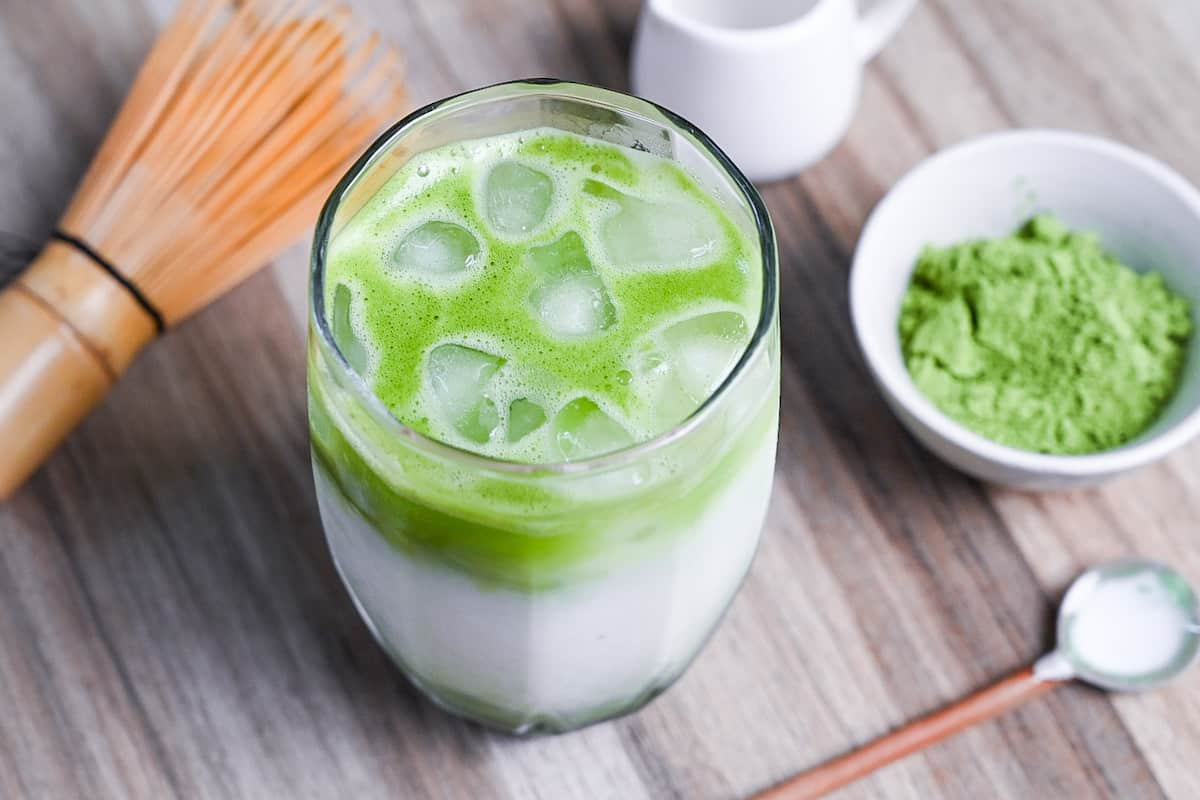
Ceremonial VS Culinary Grade Matcha
To generalize, there are two main types of matcha powder.
- Ceremonial grade – Made with the youngest leaves from the first harvest, ceremonial matcha has a refreshing taste with mild sweetness and very little astringency. It is bright green in color and the most expensive kind of matcha. It is best for drinking and simply whisked with hot water to appreciate its flavor to the full.
- Culinary grade – Made with older leaves from the second harvest, culinary grade matcha is more earthy and bitter but the quality is still good. It’s best used in drinks (like lattes and smoothies) and in baked goods, where the bitterness is complimented by the sweetness from other ingredients.
There is no need to buy the most expensive ceremonial-grade matcha for this recipe. For best results, I recommend purchasing a good quality culinary-grade matcha powder.
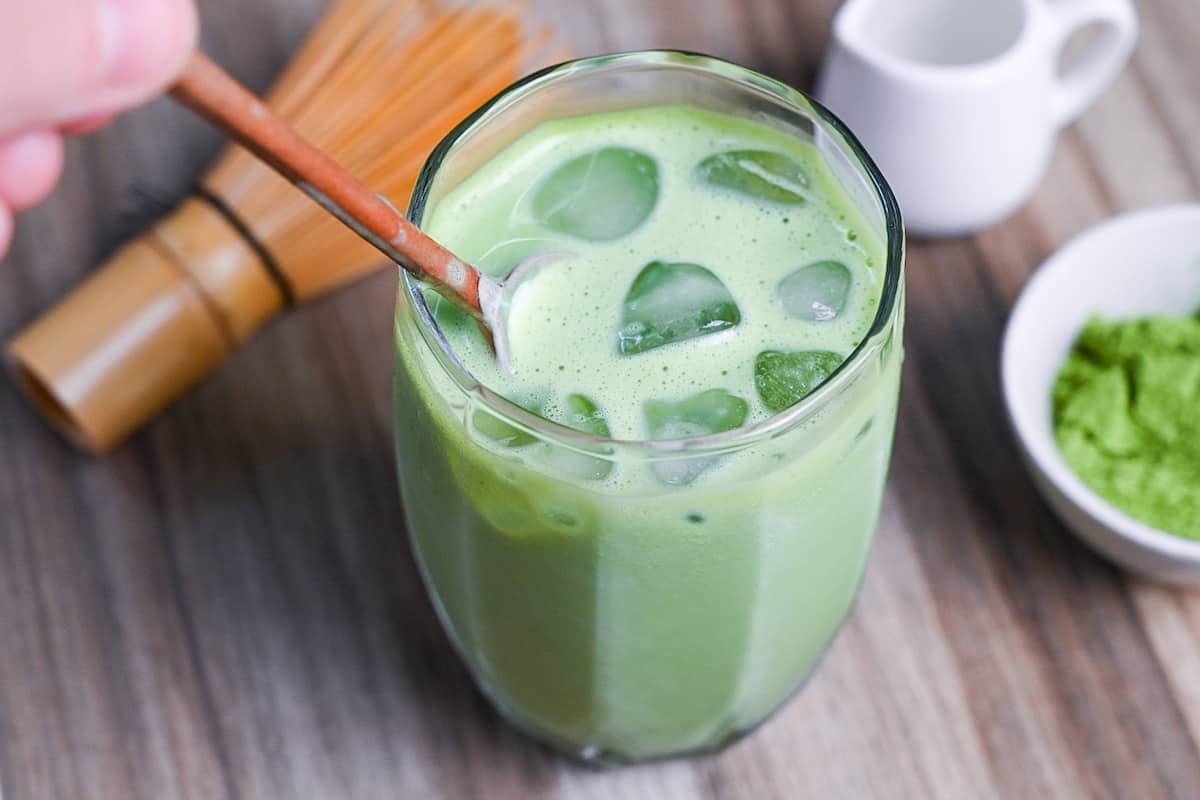
Ingredients Ideas
- Matcha powder – the key ingredient for this recipe! A good quality culinary-grade matcha is perfect for this. No need to purchase expensive ceremonial grade.
- Sugar – To make the “matcha syrup” use your preferred type of sugar. White or light brown works best. Feel free to omit it if you want to cut down on the sweetness too.
- Hot water – 80°C (176°F) is best for matcha. If the water is freshly boiled, let it cool down before use since using water that is too hot can burn the matcha and create too much bitterness.
- Milk – use your preferred milk or plant-based alternative. This recipe works well with any kind!
- Honey – not only to sweeten the milk but also helps give it a slightly thicker consistency that helps the matcha syrup sit on top. If you don’t want to use honey, feel free to use other syrup sweeteners such as maple syrup, sugar syrup, or even flavored syrups such as vanilla works great!
- Ice – it wouldn’t be iced matcha latte without ice! If you hate watering down your drinks, feel free to use frozen cubes of milk.
You can adjust the sweetness to your liking, but bear in mind that reducing the honey or syrup element can prevent you from creating a layered effect.
Jump to Full Recipe Measurements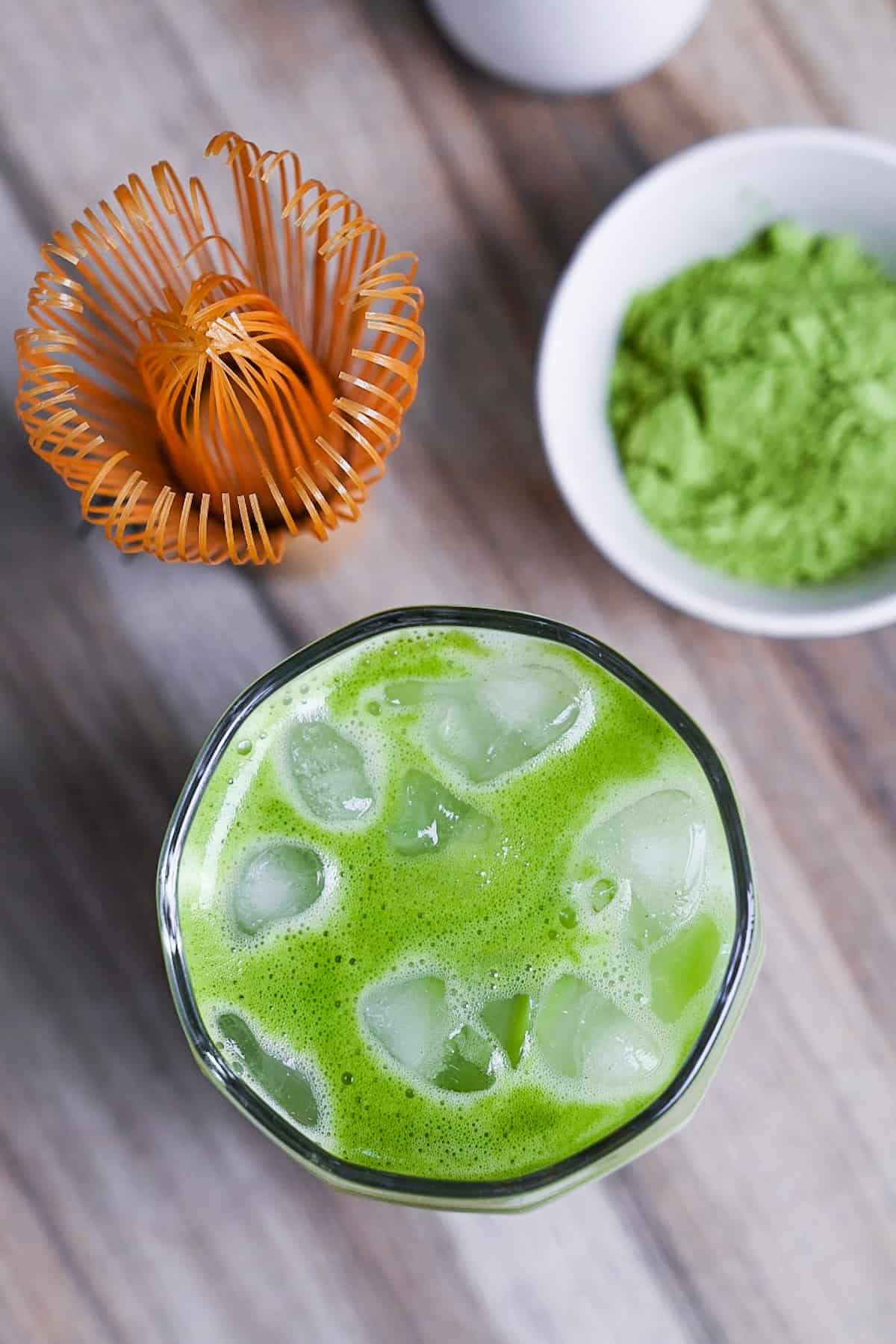
Visual Walkthrough & Tips
Here are my step-by-step instructions for how to make Cafe Style Iced Matcha Latte at home. For ingredient quantities and simplified instructions, scroll down for the Printable Recipe Card below.
First, boil your water and then let it cool to about 80°C (176°F). While you’re waiting for it to cool, sift the matcha into a small bowl. I recommend a wide bowl with a pourable spout, but it’s not essential.
For iced latte, I recommend 2 tsp of matcha per serving.
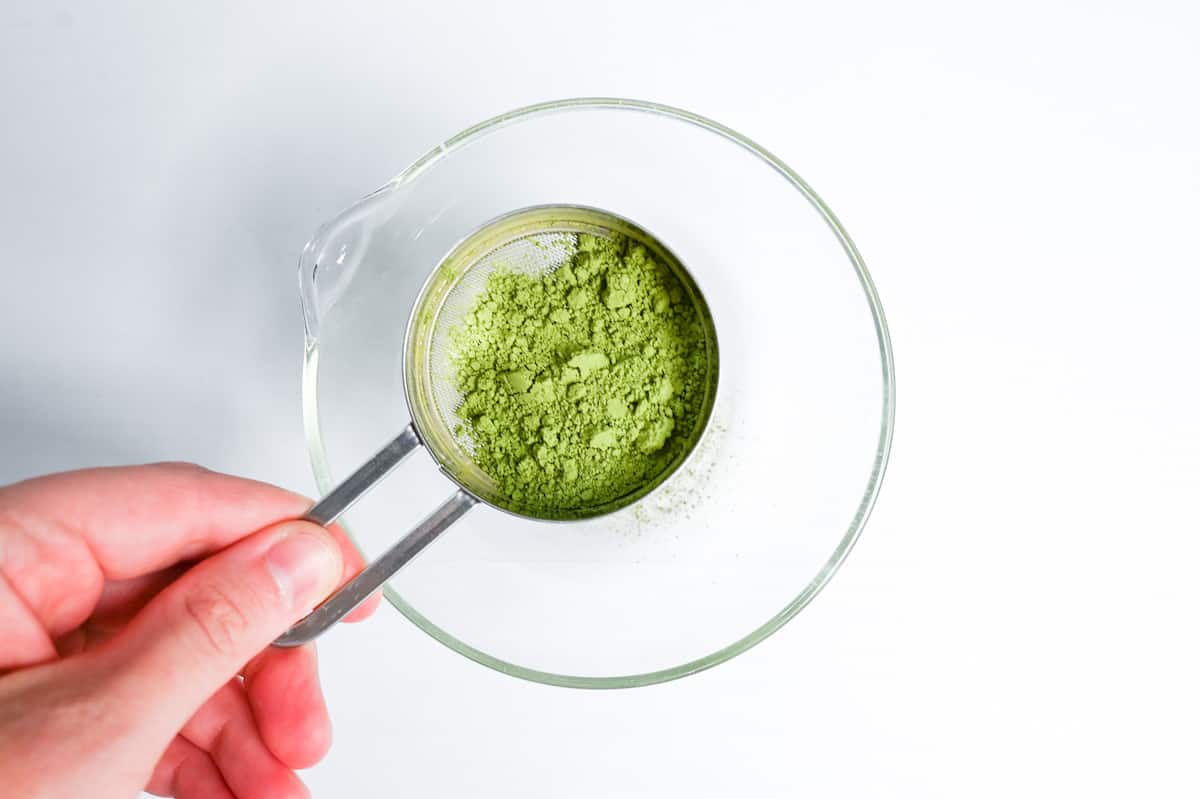
Matcha tends to absorb moisture easily and it’s common for it to have lumps. It’s very important to sift it before use!
Add sugar to the bowl. The sugar helps elevate the flavor of the matcha, but if you want to reduce the sweetness, you can omit it here.
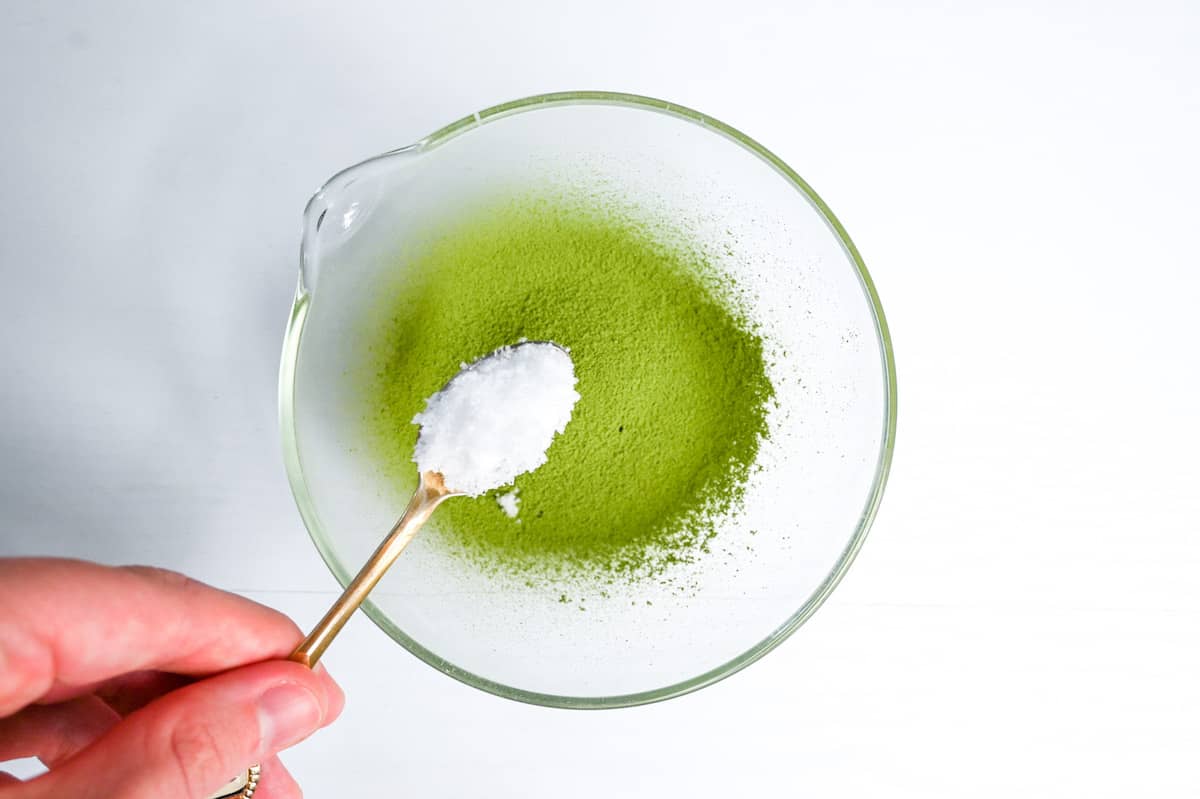
Once the water has reached 80°C (176°F), pour it into the bowl.
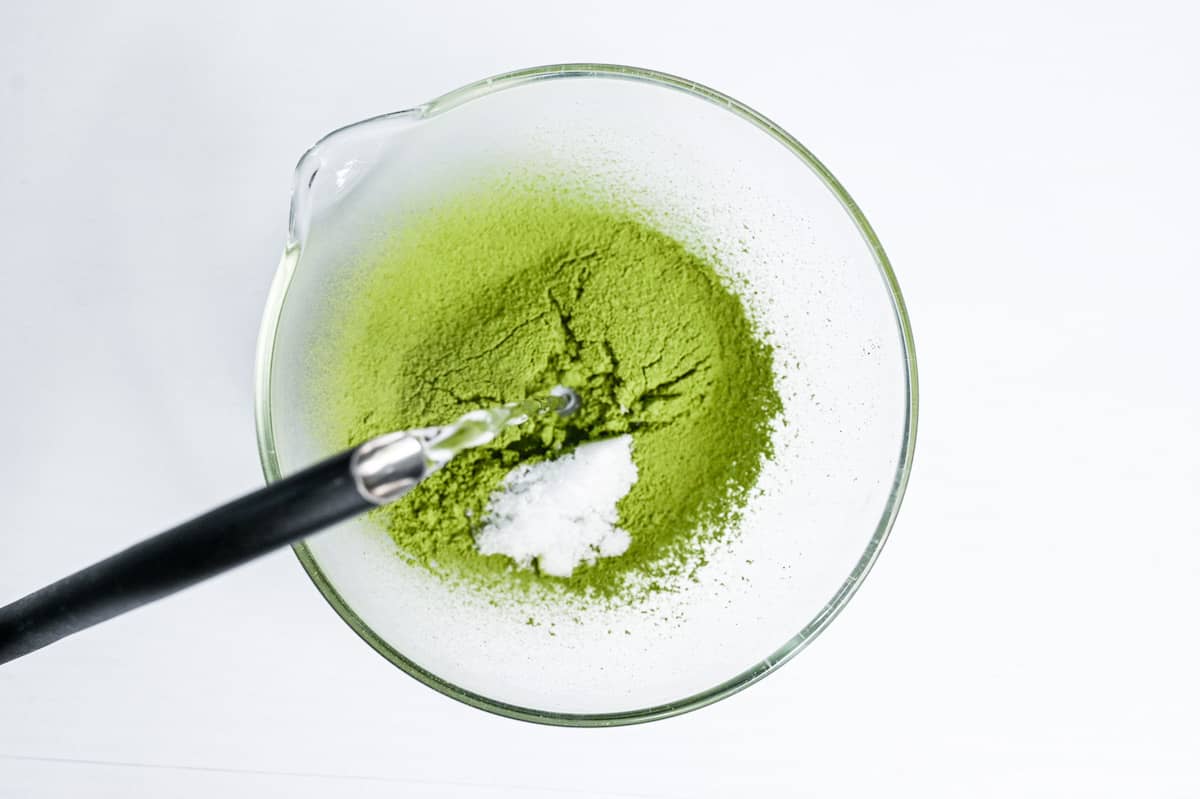
Whisk thoroughly using a matcha whisk (chasen).
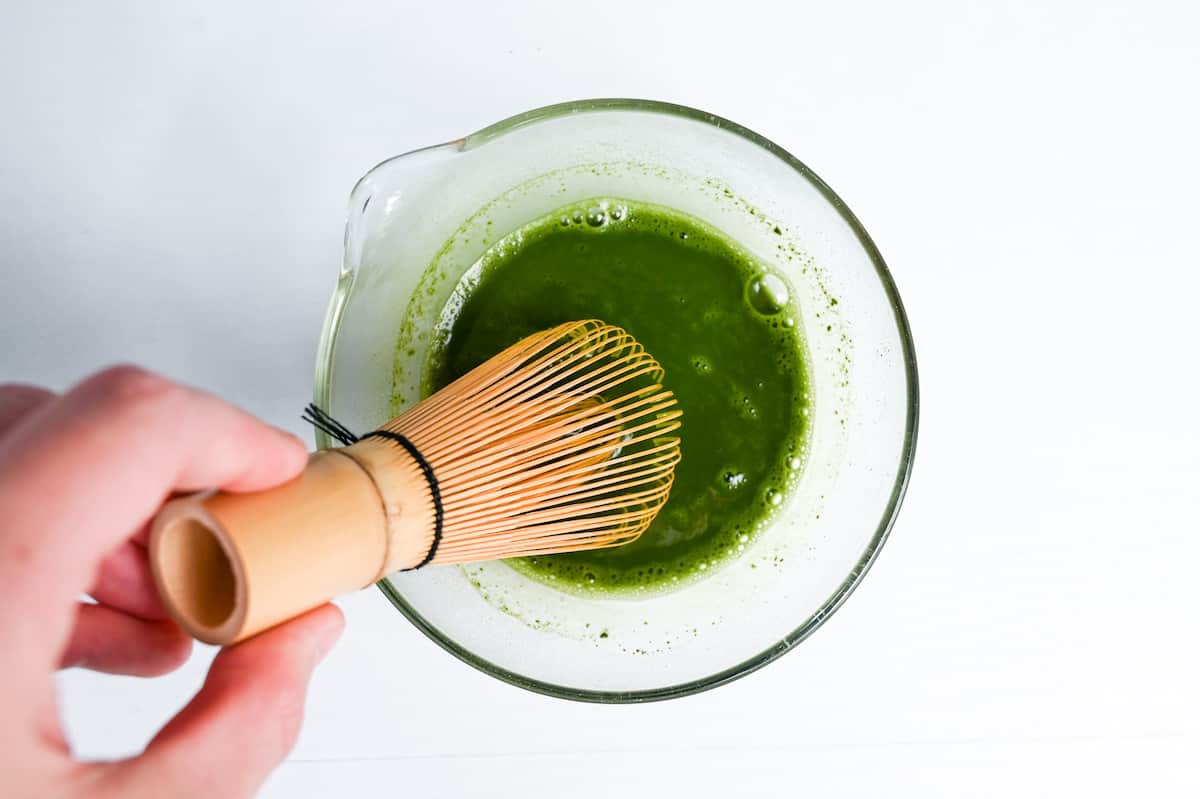
Whisk back and forth until the matcha and sugar have dissolved and a foam has formed on top.
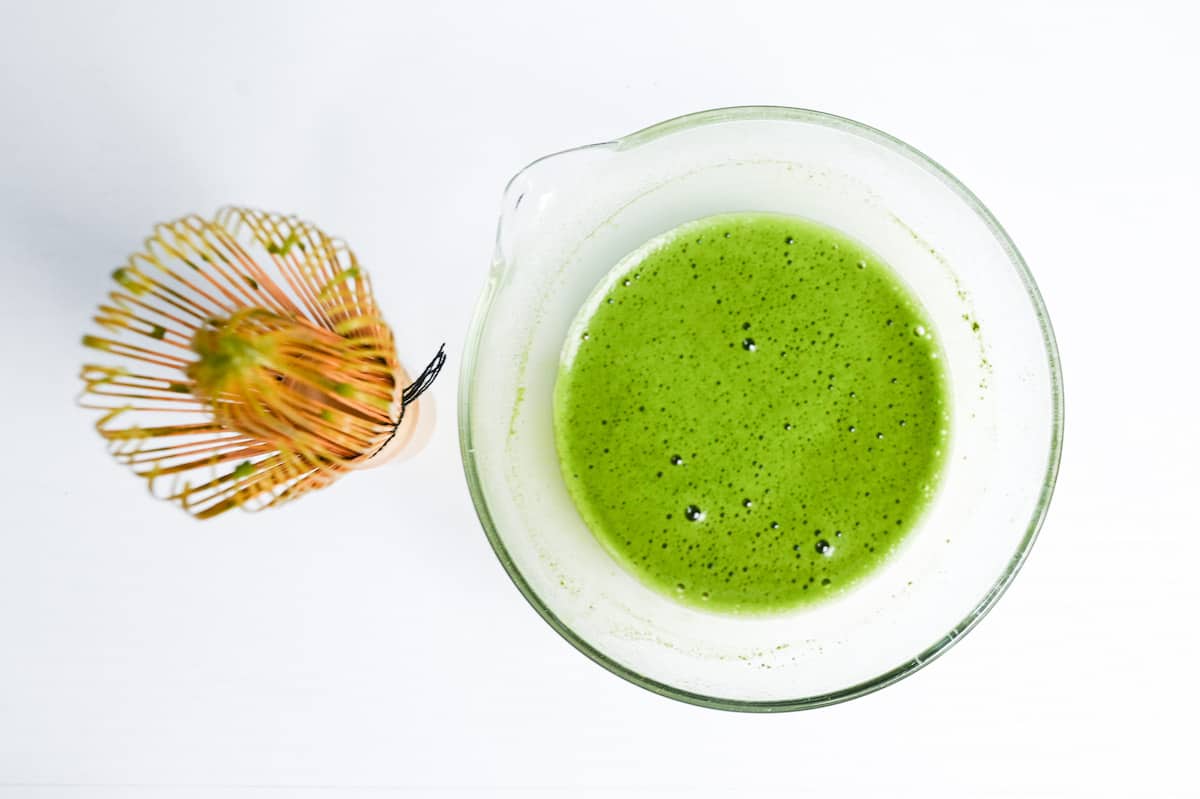
Matcha whisk (chasen in Japanese) is designed especially to aerate and break down lumps of matcha. This results in a smooth and lump-free consistency with a delicious foam on top. For best results, I recommend using a chasen for any drinks made with matcha. In a pinch, an electric milk frother is a good alternative. A regular whisk won’t achieve the best results.
In a separate measuring jug, add the milk and honey (or syrup of your choice).
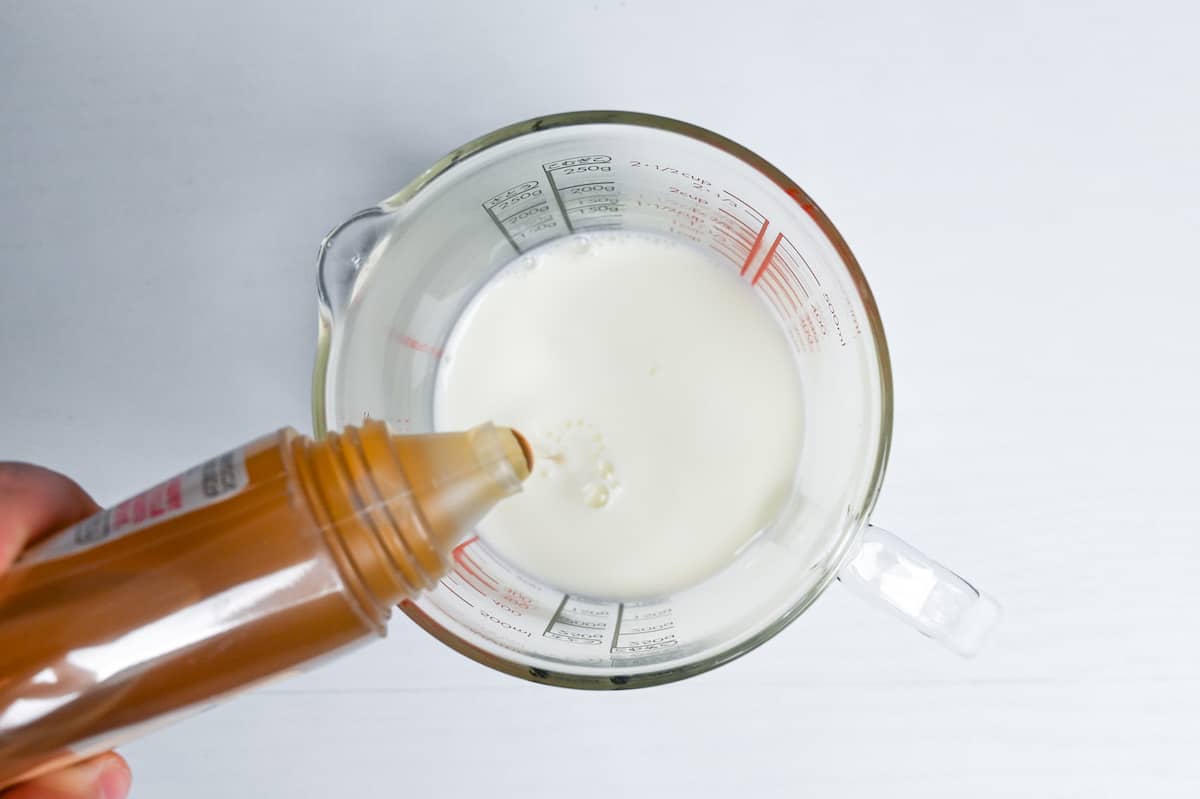
Whisk until well incorporated.
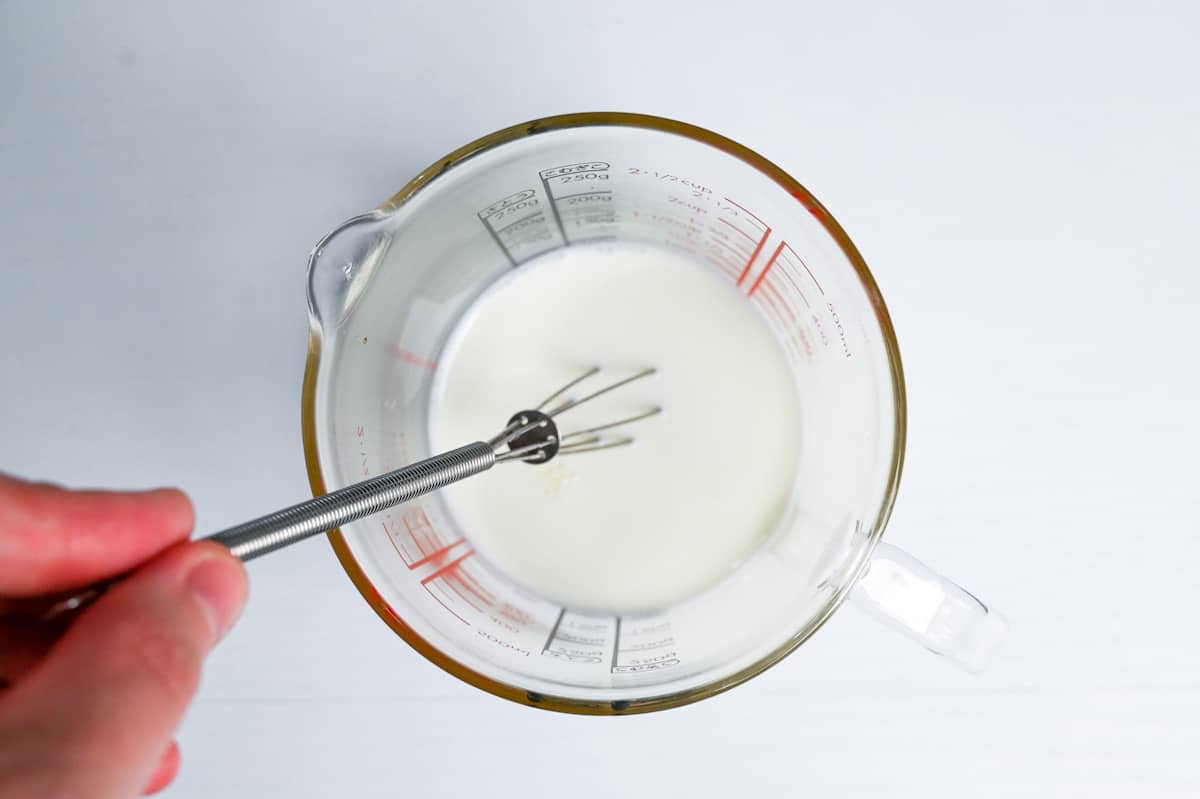
Fill a glass with ice one-third of the way up.
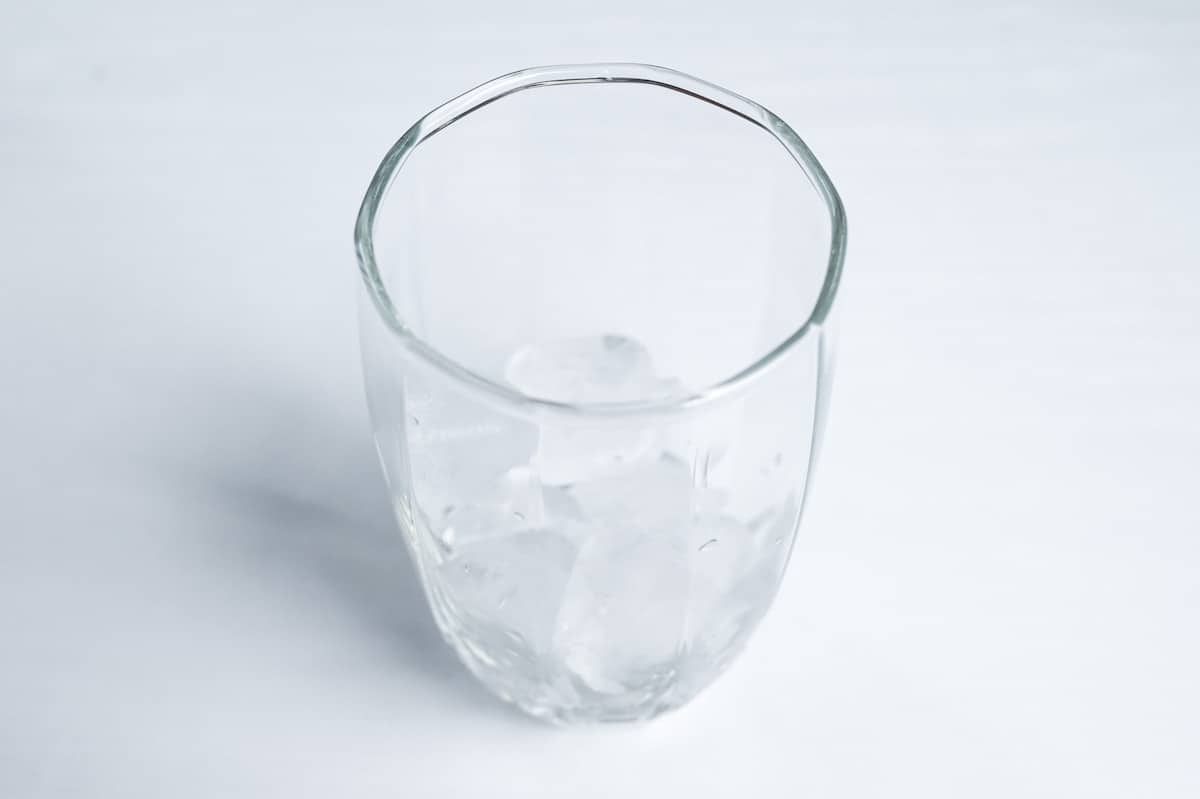
Pour the milk over the top.
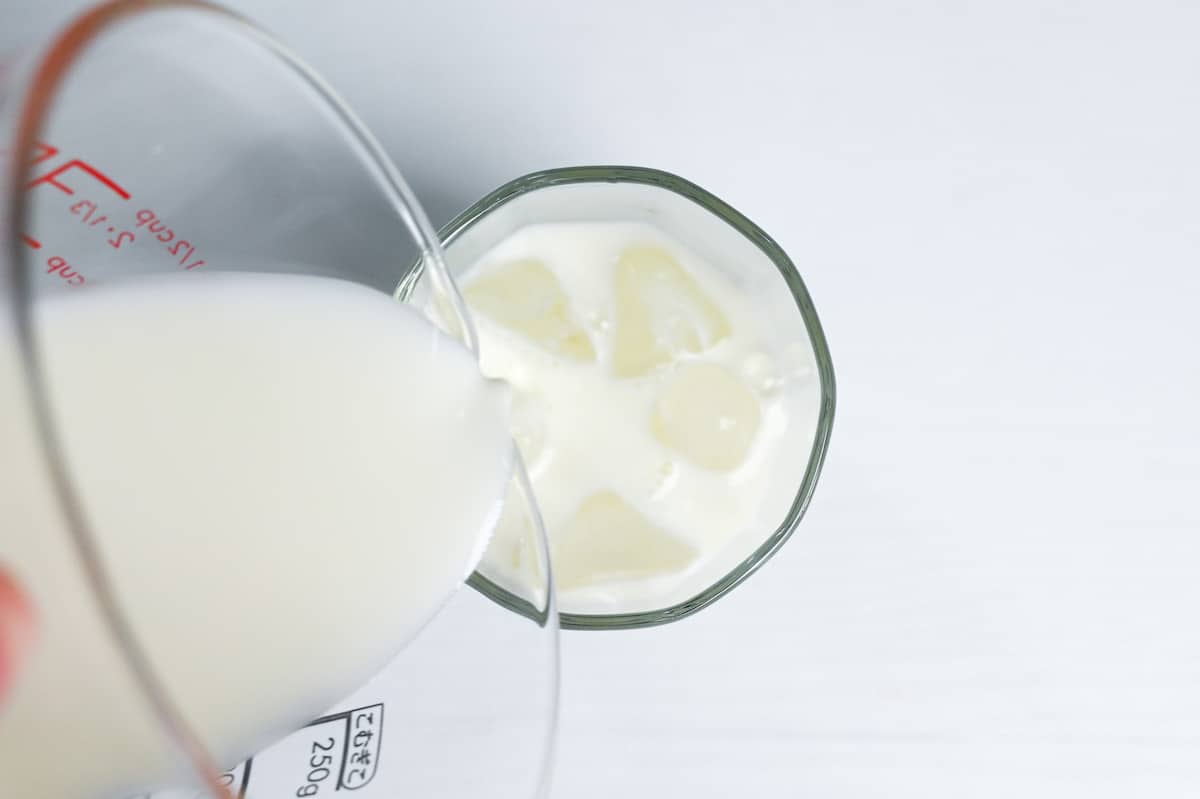
Carefully pour the matcha mixture on top. I use a spoon to slow the flow and create a matcha layer on top.
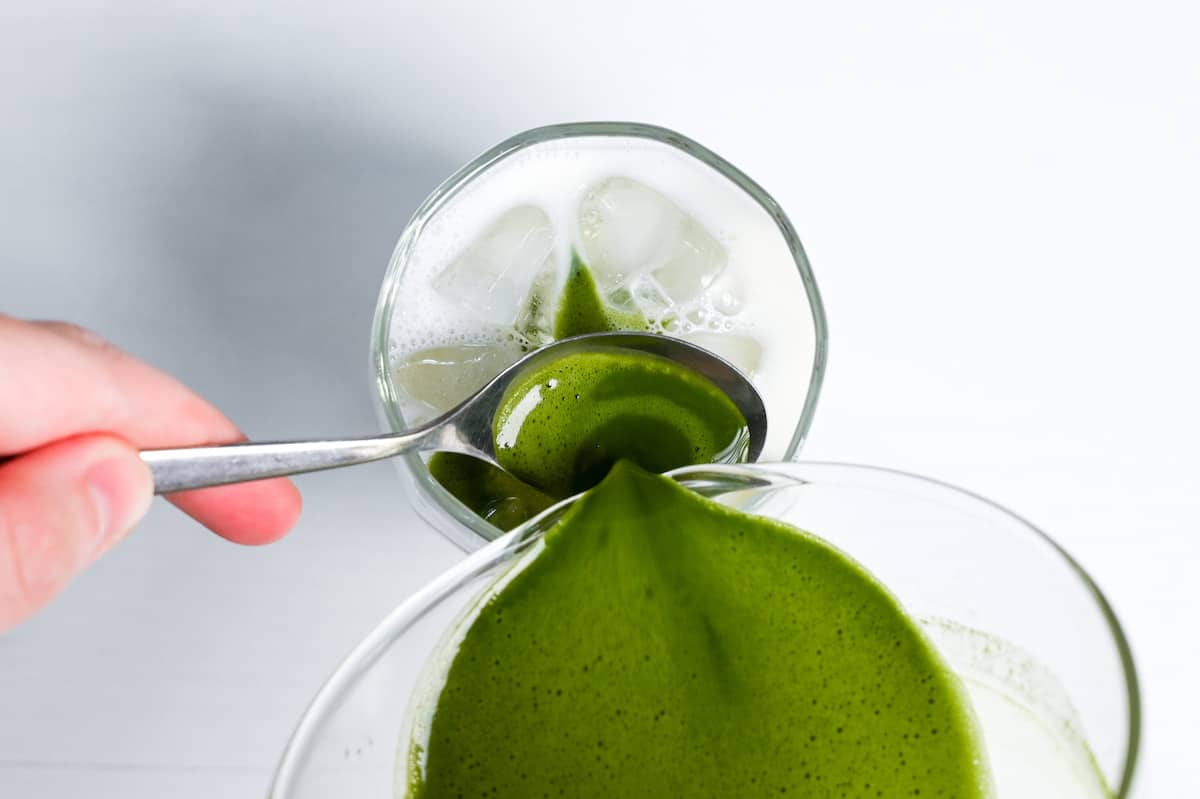
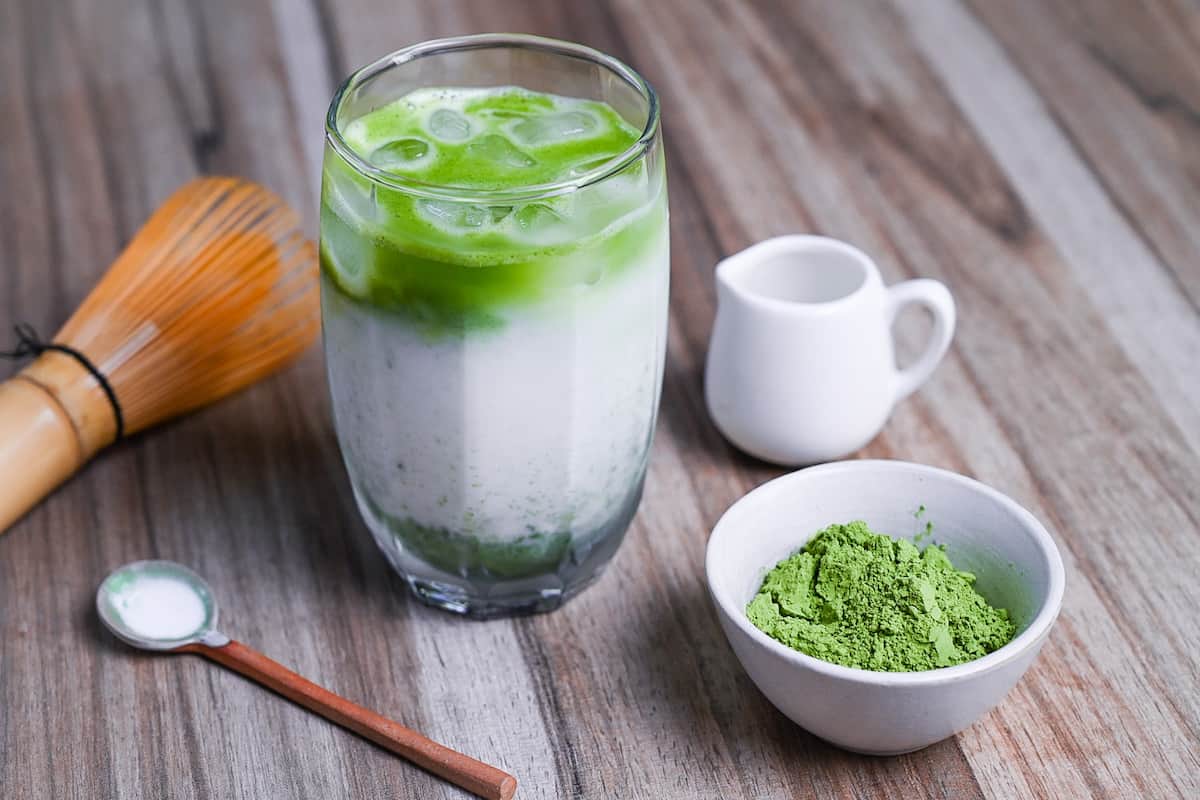
FAQ
The taste of matcha can vary depending on its grade, where it’s grown, and the brand. In general, matcha is known for its refreshing, earthy, and mildly bitter taste.
Yes, it does. The amount of caffeine in a cup of matcha is similar to a cup of coffee.
Make sure your matcha is fresh (not old) and properly stored (in a cool, dry, and dark environment in a sealed container). There is no way to revive matcha that has already lost its flavor or color, so proper storage is important.
I recommend using culinary-grade matcha for matcha latte. Ceremonial-grade matcha should be drunk and appreciated on its own.
Once matcha is opened, it doesn’t keep indefinitely and there are steps you can take to prolong its shelf life.
Store in an airtight container – this prevents oxidization which is one of the top causes of loss of flavor and color.
Store in a dark place – light is another contributor to loss of color and flavor so store it in a container that keeps the light out.
Keep away from strong smells – since matcha tends to absorb the smells and this will alter its taste.
Freeze – Unopened matcha can be frozen for about 2 months, but should be slowly brought to room temperature before using.
Refrigerate – once opened, it’s is okay to store matcha in the refrigerator as long as the container is properly sealed. Matcha can be refrigerated for about 3 weeks after opening.
Avoid sudden changes in temperature – It is also advised to let frozen or refrigerated matcha reach room temperature before opening. Sudden temperature changes will cause the matcha to absorb the moisture in the air and hard lumps will form.
Sift before use – even in the best conditions, matcha is prone to clumping. No matter whether you are using it for drinking or baking, make sure to sift it before use.
Divide large batches – opening and closing containers repeatedly leaves more chance for oxidisation or moisture to get in. If you purchase a large amount of matcha, it is recommended to divide it into smaller containers to prolong the shelf life.
How to Choose Matcha Powder
Choosing matcha powder can be a little overwhelming, there are many different brands and the price can vary wildly. My best advice is to read product reviews and buy small quantities at a time so that you can find your “go-to matcha powder”.
Good quality matcha powder should have the following qualities:
Color – green and vibrant indicates freshness (dull or yellow/brown usually means the matcha is old and not good).
Smell – it should have a fresh and pleasant aroma.
Taste – it should an earthy yet refreshing flavor with a pleasant bitterness.
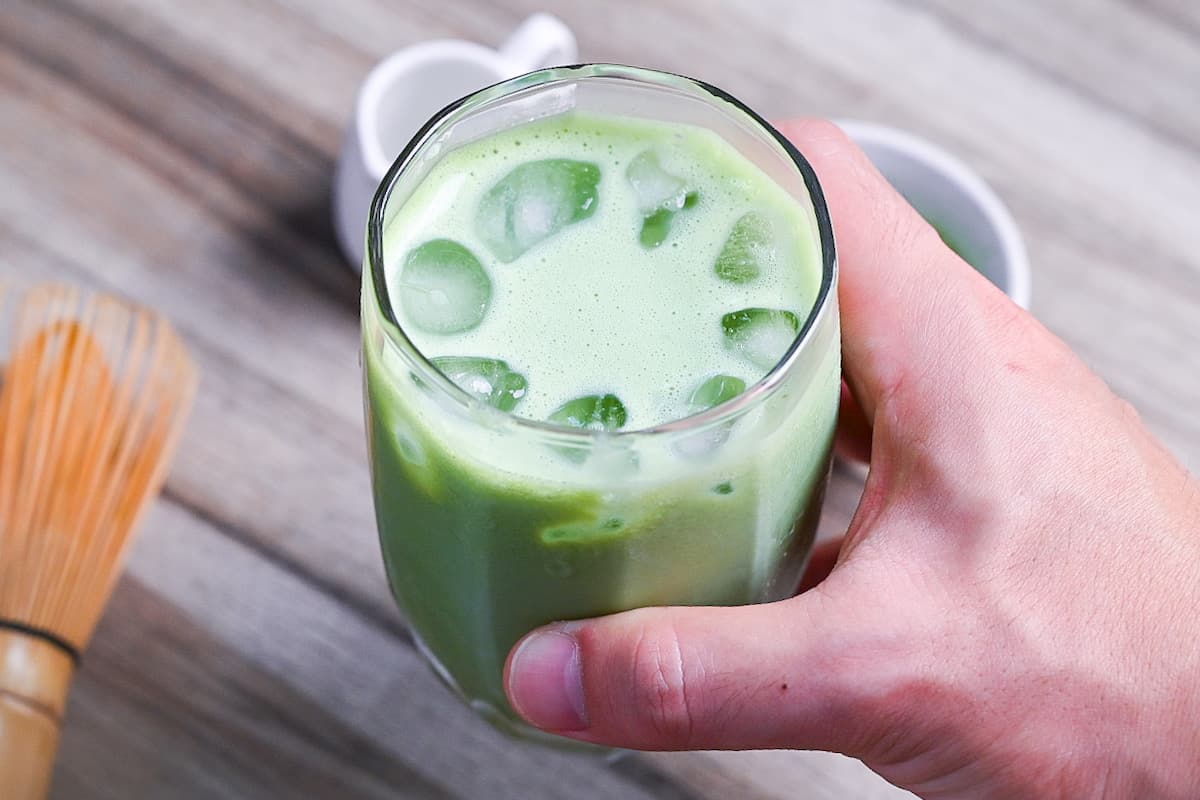
I hope you enjoy this Iced Matcha Latte recipe! If you try it out, I’d really appreciate it if you could spare a moment to let me know what you thought by giving a review and star rating in the comments below. It’s also helpful to share any adjustments you made to the recipe with our other readers. Thank you!
More Japanese Drink Recipes
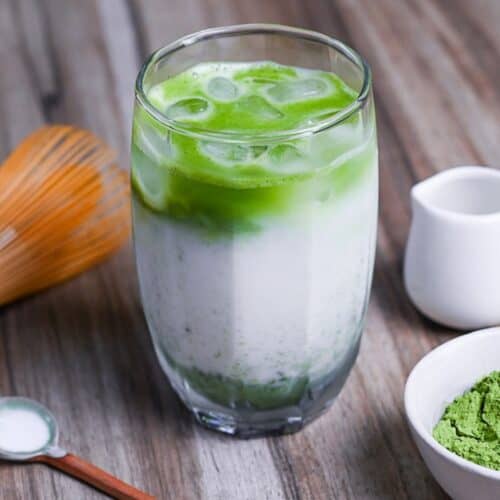
Iced Matcha Latte (Iced Green Tea Latte)
Equipment
- Matcha Sifter
- Mini whisk
Ingredients
- 2 tsp matcha powder
- 1 tsp sugar
- 50 ml hot water heated to around 80°C (176°F)
- 2 tsp honey or maple syrup, sugar syrup, etc
- 180 ml milk of your choice
- ice cubes
My recommended brands of ingredients and seasonings can be found in my Japanese pantry guide.
Can’t find certain Japanese ingredients? See my substitution guide here.
Instructions
- First, boil your water and then allow it to cool to about 80°C (176°F).Sift 2 tsp matcha powder into a small bowl.

- Add 1 tsp sugar.

- Pour 50 ml hot water into the bowl.

- Whisk until the matcha and sugar have dissolved and foam has formed on top. I recommend using a "chasen" (bamboo matcha whisk) for best results.

- In a separate jug, measure out 180 ml milk and add 2 tsp honey.

- Whisk until the honey is incorporated into the milk.

- Fill a glass with ice cubes about one-third of the way up.

- Pour the sweetened milk over the ice.

- Carefully pour the matcha mixture over the top, use a spoon to slow the pour. This will create a layered effect.

- Mix well before drinking and enjoy!

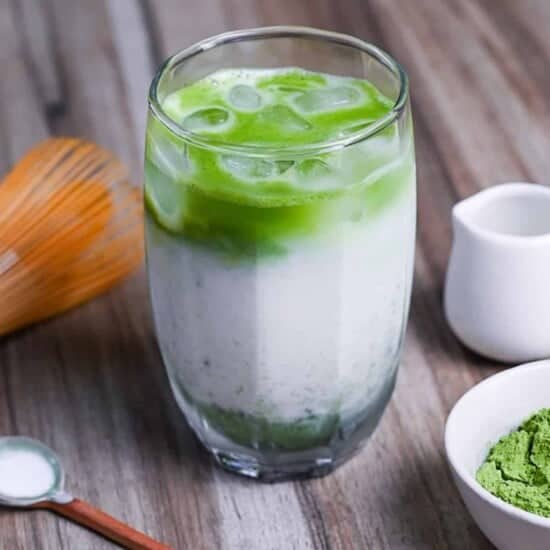


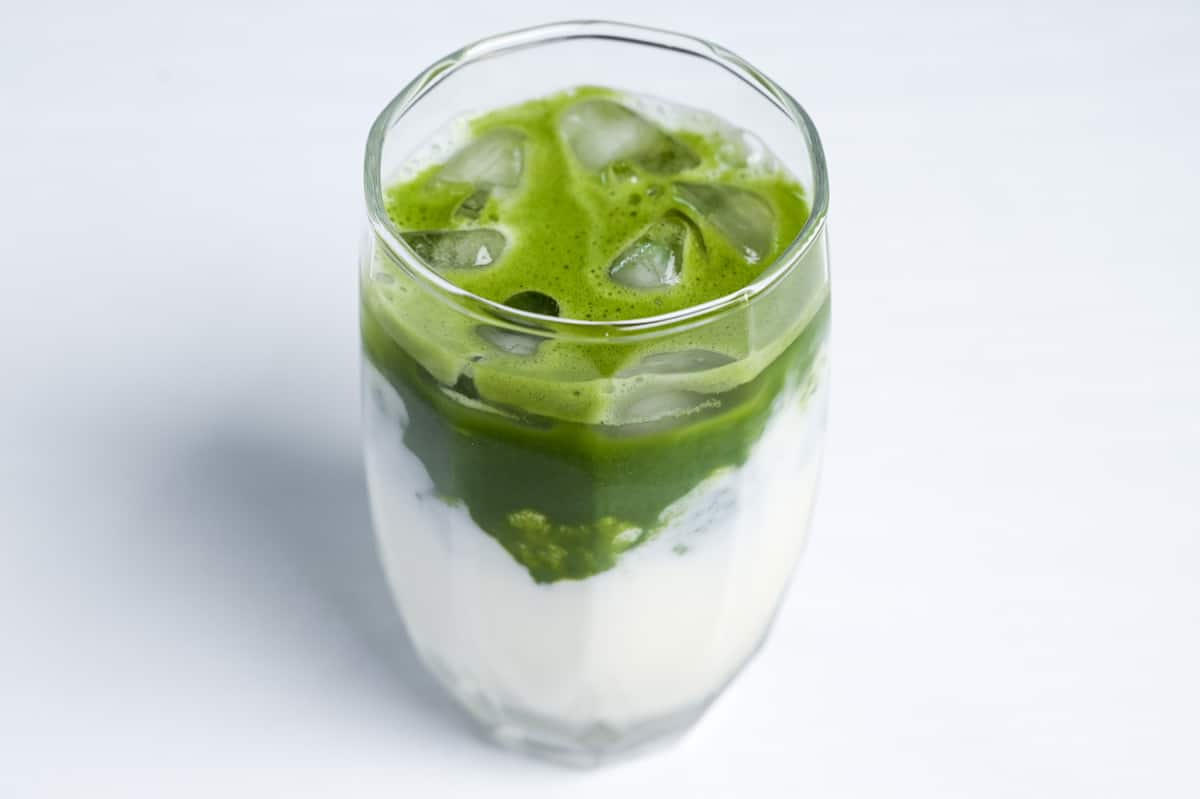
I tried your recipe – it is very pleasant to drink 🙂 Thank you~
Thank you so much, I’m glad you liked it!